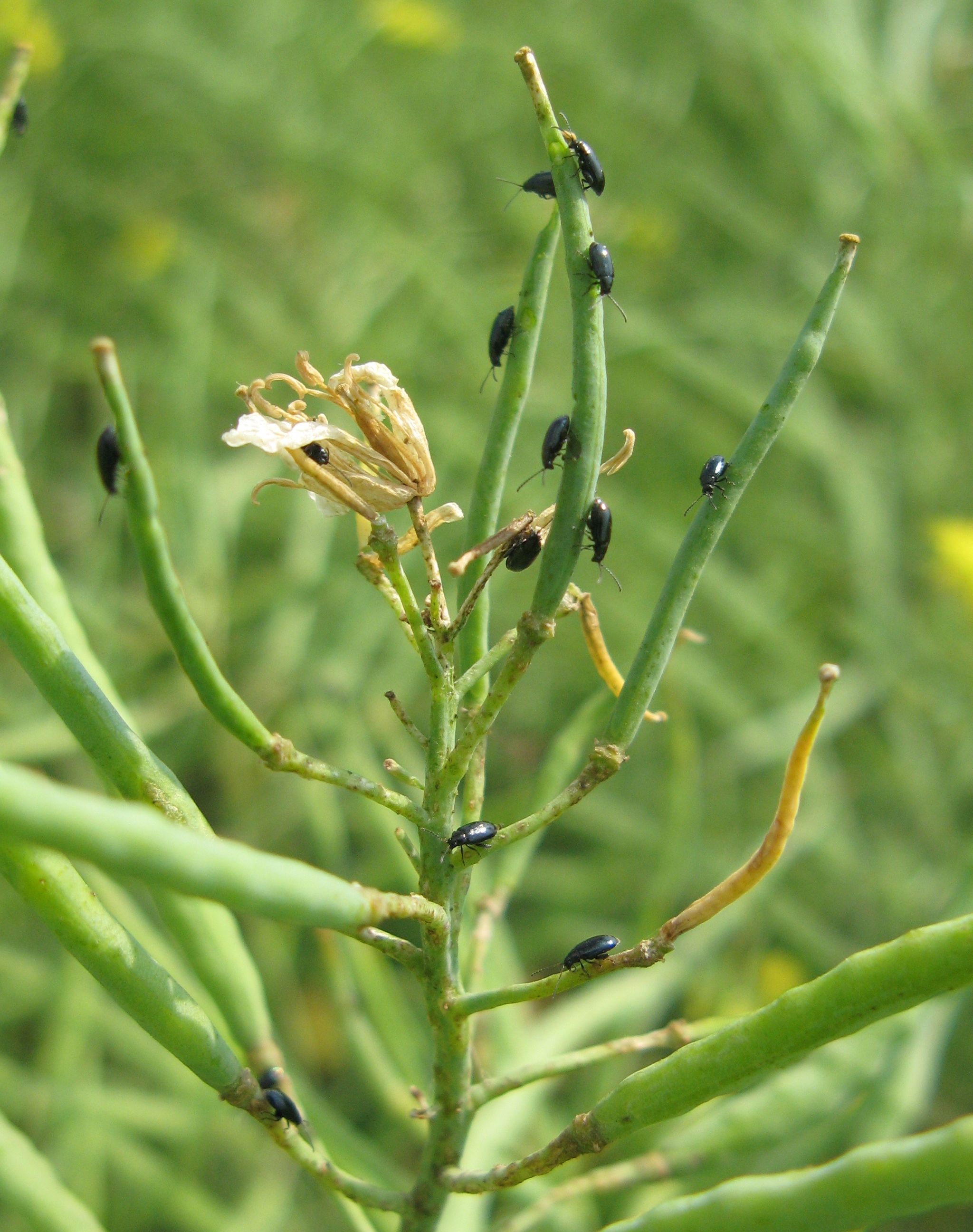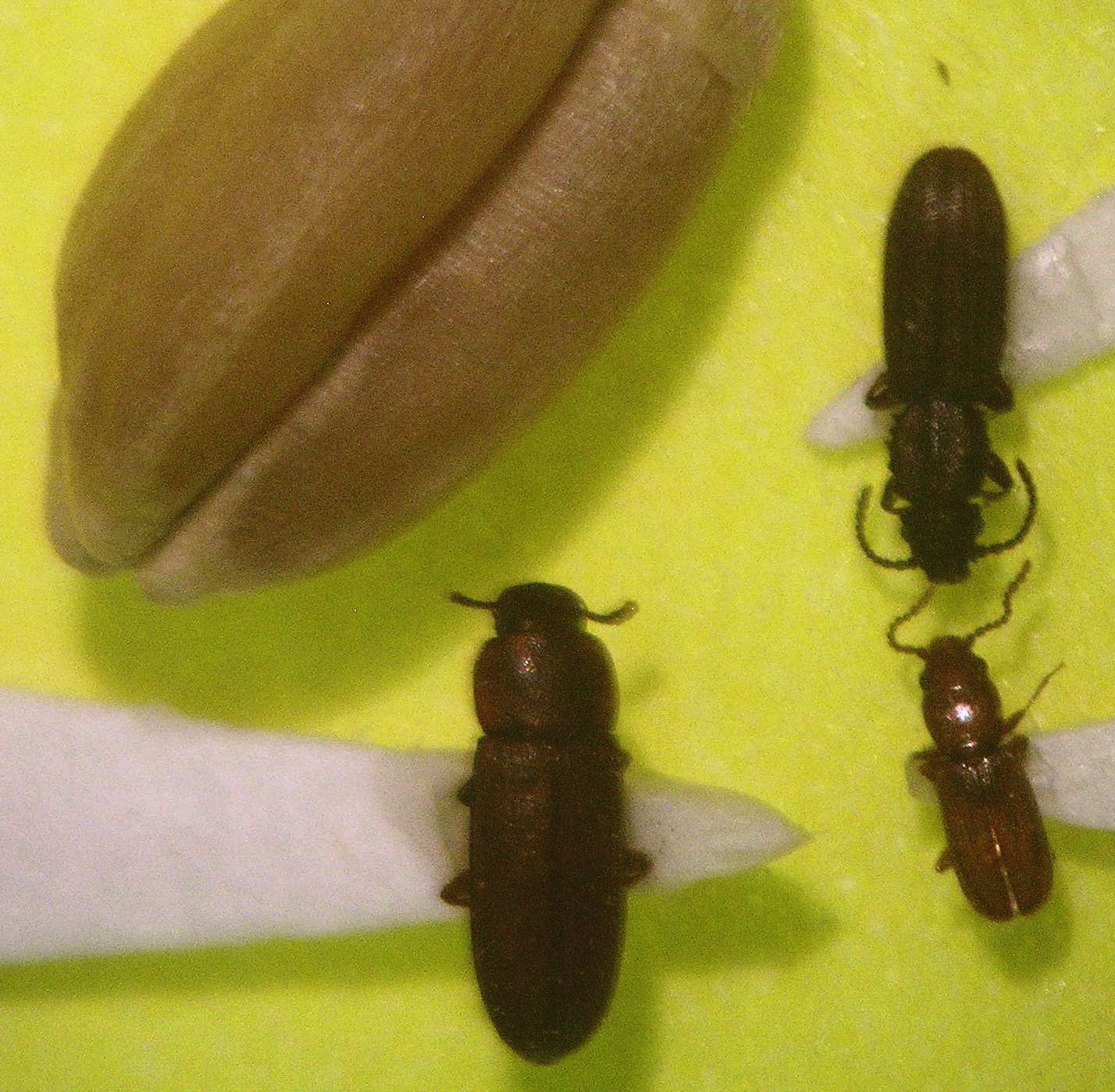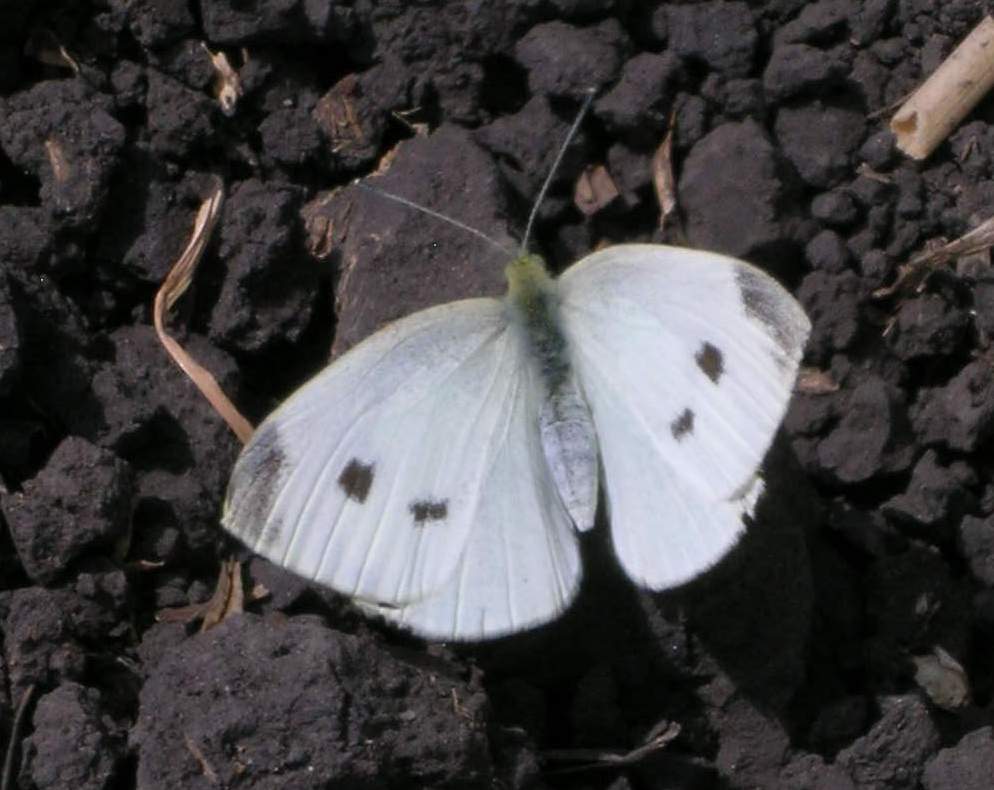Manitoba Insect & Disease Update: August 25, 2015
Summary
Plant Pathogens: Blackleg and sclerotinia are being found at low levels in canola throughout Manitoba. Phytophthora root rot is showing up in soybeans in some areas.
Insects: Scouting continues for Lygus bugs in some of the later seeded canola and soybean aphid in later seeded soybeans. Most of the field crops, aside from very late seeded fields, are now advanced beyond the stages where sap feeding insects such as aphids and Lygus bugs can be of economical concern.
Canola
Flea beetles on canola late in the season: Flea beetle feeding on canola in late-summer is rarely an economic concern. Research in Saskatchewan found that flea beetle feeding that occurs when seeds in lower pods of canola are at the green stage or beyond is unlikely to affect seed yields regardless of the infestation rate of flea beetles. Even when seeds are translucent to green, numbers higher than 100 flea beetles per plant, and for some cultivars higher than 350 per plant, may be necessary to cause significant yield reductions (Soroka and Grenkow.Can. J. Plant Sci. 2012: 97-107).

Figure 1. Flea beetles on podded canola.
Soybeans
Incorporating natural enemies into management decisions for soybean aphids: In past updates we have looked at the role of natural enemies in regulating levels of soybean aphids, and in many fields natural enemy levels have been high and seem to be doing a good job regulating soybean aphid levels. Adjusting the economic threshold for soybean aphids to include natural enemies can be done. Levels of soybean aphids and natural enemies can be counted and a dynamic action threshold, which includes the impact of some natural enemies, can be calculated using a calculator or app, which was created for this purpose. The available app is called Aphid Advisor. You can find information on how to get the app at: http://www.aphidapp.com/
Phytophthora root rot: Phytophthora root rot is still showing up in soybeans. Agronomists are encouraged to send in plant and soil samples to the diagnostic lab in Winnipeg when they encounter this pathogen in soybeans. Send plant samples and soil surrounding the plant as two separate samples. Remember to provide the location and label as Phytophera study.
This root rot is found only in soybeans. When the plant dies, leaves don't fall off.
There are different races of this disease. Although there are varieties that have resistant genes, we do not know which races we have in MB, hence the study and request for samples to be submitted.

Figure 2. Phytophthora root rot on soybeans
Insects in Stored Grain
Preventing stored grain insects: A reminder before moving and storing new grain to clean old grain out of bins, augers, combines, truck beds, and other areas where grain or grain debris may be. Infestations of stored grain insects such as rusty grain beetles do not get started by harvesting the insects along with the grain. They are the result of insects already being present in bins or equipment used to move grain, or insects being able to get into the stored grain through openings in bins or storage structures. Below is a picture of a sawtoothed grain beetle (top right), red flour beetle (bottom left), and rusty grain beetle (bottom right) with a grain of wheat (top left) to give perspective on size.

Figure 3. Some beetles that may occur in stored grain.
Some insects in stored grain, such as the rusty grain beetle, will feed primarily on the grain, while others, such as foreign grain beetle, may be feeding primarily on molds growing on grain that is too moist. So it is good to know the species you are dealing with as management options may differ. Although both are very small beetles, when placed in a glass jar foreign grain beetles can climb up the sides, while rusty grain beetles cannot.
For long-term storage of grain, lowering the grain temperature below 15C as soon as possible after the grain is placed in storage can help minimize the risk of stored grain insects. Below 15C potential insect pests of stored grain stop laying eggs and development stops. Grain that is not aerated or moved after harvest can often remain warm enough for insects to survive the winter.
General Crop Scouting
Cabbage Butterflies: Some have been asking about what the white butterflies are that seem to be quite common currently. Although there are several species of white butterflies, the species that is currently quite abundant is the cabbage butterfly (Pieris rapae). The adults will be attracted to many flowering plants, but the larvae feed specifically on cruciferous plants. They will feed on canola, and generally prefer to feed on the leaves. They are not normally considered pests of canola, even though you may find the larvae while scouting canola fields. However, they can be a concern on cruciferous vegetables.
 |
| Figure 4. Cabbage Butterfly |
Female cabbage butterflies have two black spots on the wings and the males only one spot. So this is a female cabbage butterfly in Figure 4.
Insect Monitoring Programs
Grasshopper Survey: A reminder for those participating in the grasshopper survey, that counts are done during August, when the majority of grasshoppers are in the adult stage.
Agronomists and farmers who would also be interested in estimating grasshopper numbers in the fields they are in and have this information included in the survey are encouraged to see the survey protocol for more details of the survey and where to send data. Estimates of grasshopper levels can be collected during regular farm visits.
Data from the survey, along with weather data during the egg laying period of the grasshoppers, is used to produce a forecast map for 2016.
The protocol and data sheet for the grasshopper survey is at: http://www.gov.mb.ca/agriculture/crops/insects/mb-grasshopper-survey.html
Compiled by:
John Gavloski, Entomologist
Manitoba Agriculture, Food and Rural Development
Phone: (204) 745-5668 Fax: (204) 745-5690.
To report observations on insects or plant pathogens that may be of interest or importance to farmers and agronomists in Manitoba, please send messages to the above contact address.
To be placed on an E-mail list so you will be notified immediately when new Manitoba Insect and Disease Updates are posted, please contact John Gavloski at the address or numbers listed above.
Manitoba Insect & Disease Update: August 25, 2015

